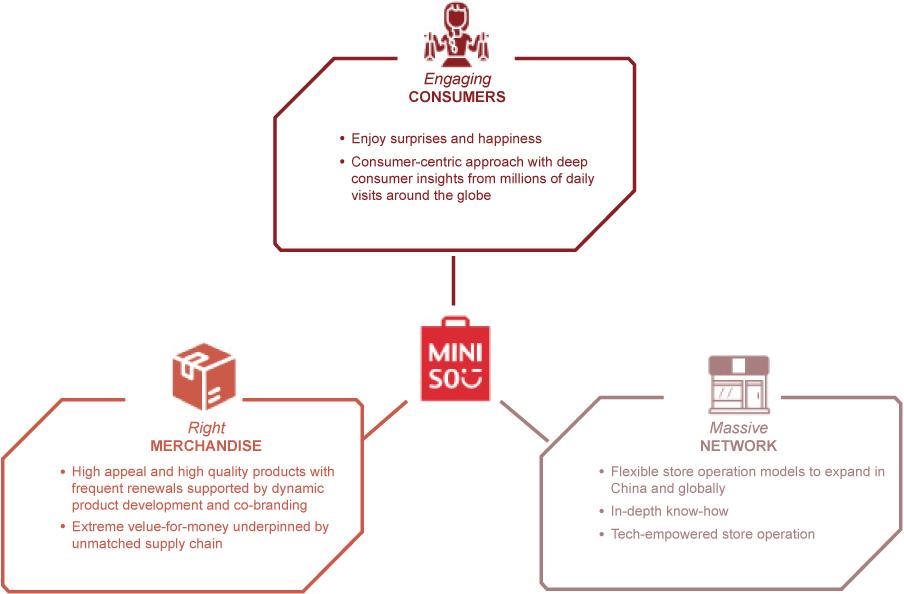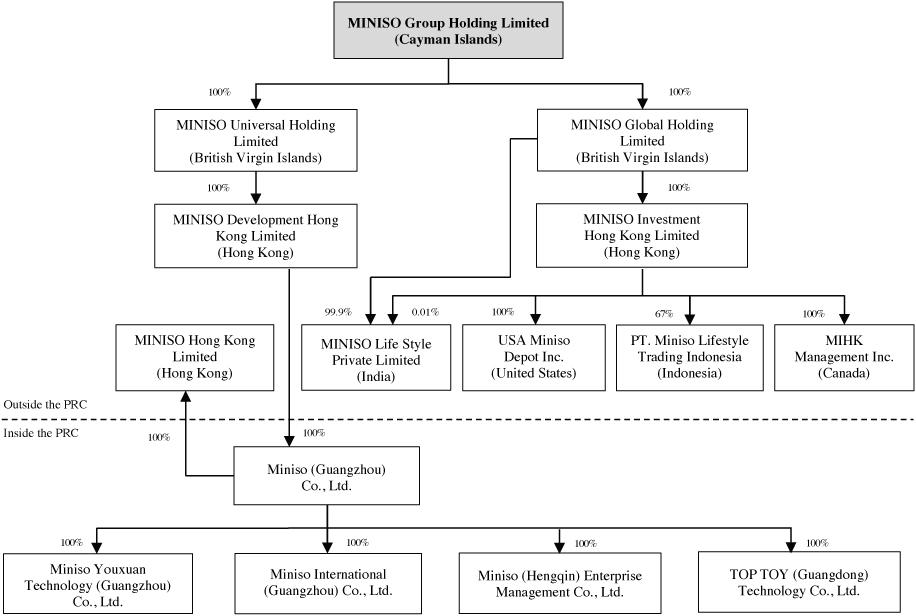Our Business Model
The following diagram Illustrates our business model end the various participants in our business:

Our Products
Our flagship brand “MINISO” offers a frequently-refreshed assortment lifestyle products covering diverse consumer needs, and consumers are attracted to our products’ trendiness, creativeness, high quality and affordability. MINISO’s product offering encompassed about 8,800 core SKUs in the fiscal year ended June 30, 2021 across 11 major categories: home decor, small electronics, textile, accessories, beauty tools, toys, cosmetics, personal care, snacks, fragrance and perfumes, and stationery and gifts.
To attract and keep the interest of consumers, we also update MINISO’s product portfolio frequently with new and trendy products. With our “711 philosophy,” every 7 days, we aim to launch approximately 100 new SKUs carefully selected from a large library of 10,000 product ideas. In the fiscal year ended June 30, 2021, MINISO launched an average of about 550 SKUs per month.
MINISO aims to serve a large population globally with affordable lifestyle products. In general, we set our product prices at levels that are competitive by local pricing standards for similar products. We are able to achieve this competitive price level leveraging China’s unmatched massive supply chain in the lifestyle product sector, large procurement volumes, punctual payment to suppliers and continuously optimized supply chain, which collectively contribute to our procurement cost advantages. In the fiscal year ended June 30, 2021, more than 95% of MINISO products had retail prices under RMB50 (US$7.74) in China.
Under our TOP TOY brand, we offered around 3,000 SKUs in the fiscal year ended June 30,2021 across 8 major categories, including blind boxes, toy bricks, model figures, model kits, collectible dolls, Ichiban Kuji, sculptures and other popular toys.
76
